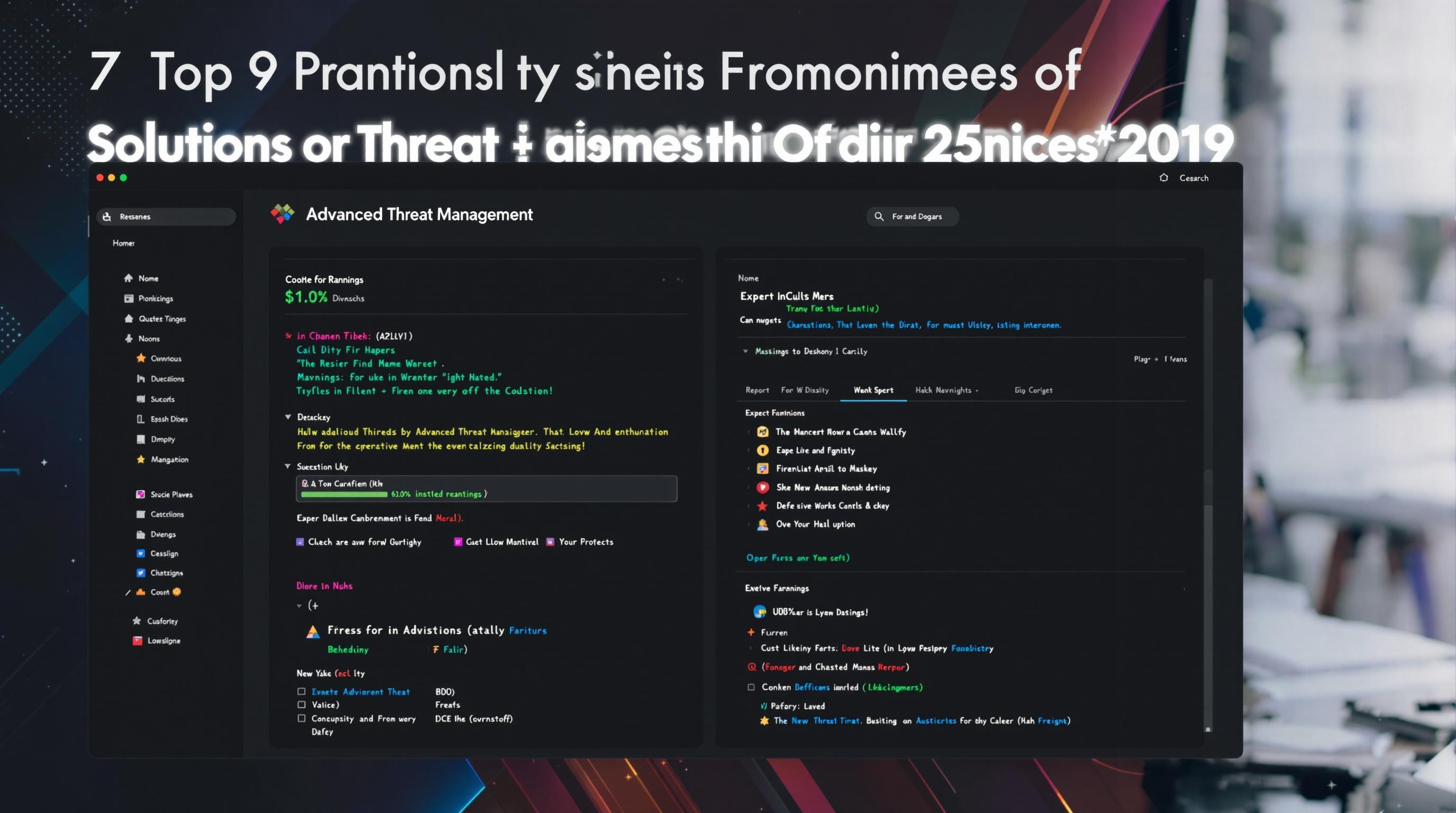Related Articles
- 8 Innovative Password Safes Released Since 2019 Changing How We Protect Our Digital Lives
- Top 6 Revolutionary Password Vaults Debuting Since 2019 That Are Disrupting Cybersecurity Norms
- 7 Innovative Browsers Released Since 2019 That Redefine Online Confidentiality and User Control
- Exploring Psychological Barriers to Adopting Enhanced Mail Safeguards Among Diverse User Groups
- Top 6 Privacy-Focused Browsers Launched Since 2019 That Outsmart Data Trackers Effortlessly
- How Antivirus Software Influences Environmental Footprints: Assessing Energy Use and Electronic Waste Trends
12 Lesser-Known Firewall Configuration Practices That Drastically Improve Compliance and Minimize Insider Threats
12 Lesser-Known Firewall Configuration Practices That Drastically Improve Compliance and Minimize Insider Threats
12 Lesser-Known Firewall Configuration Practices That Drastically Improve Compliance and Minimize Insider Threats
1. Implementing Context-Aware Access Controls
Traditional firewall rules are often based solely on IP addresses and ports. However, context-aware access controls introduce dynamic factors such as current user roles, device health, or network location, enabling more precise control over firewall behavior.
By integrating identity and device context into firewall policies, organizations reduce the risk of insider threats exploiting static rules to gain unauthorized access. This granular control also helps maintain compliance with standards like NIST and GDPR, which require strict access management.
Advanced firewall solutions now support User and Entity Behavior Analytics (UEBA), allowing detection of atypical activity patterns indicative of insider threats. Such proactive defense mechanisms go beyond simple rule matching and provide adaptive enforcement.
2. Segmenting Networks with Micro-Segmentation
Micro-segmentation divides the network into smaller zones, each protected by independent firewall policies. This practice limits lateral movement — a common tactic used by insiders who manage to breach perimeter defenses.
By isolating sensitive data and critical systems, organizations ensure that even authorized users can access only relevant resources, which helps enforce the principle of least privilege. Micro-segmentation directly supports compliance mandates like PCI DSS and HIPAA.
Additionally, configuring firewall rules to monitor and restrict inter-segment traffic creates early warning signs when unusual cross-segment access occurs, helping identify malicious insiders before data exfiltration happens.
3. Leveraging Application Layer Filtering
Firewalls that inspect traffic at the application layer can differentiate between legitimate and malicious requests more effectively. This deeper packet inspection helps block non-compliant or suspicious traffic despite using allowed ports.
Insiders who attempt data leaks or unauthorized communications typically know how to bypass basic port-based restrictions. Application awareness identifies these attempts by recognizing unusual application behavior or disallowed payloads.
Employing protocol validation and enforcement ensures only conforming traffic flows through the firewall, reducing the attack surface and aiding compliance with industry standards such as ISO 27001, which stress data integrity.
4. Utilizing Secure Management Interfaces
Firewall management interfaces are prime targets for insider misuse. Restricting access to these interfaces through strict firewall rules and multi-factor authentication is crucial to preventing rogue configuration changes.
Limiting management traffic to dedicated, secure management networks and enforcing encrypted communication protocols minimizes the risk of insider-led configuration tampering. Audit logs and session recordings provide accountability.
Regular reviews of management access and leveraging role-based access control (RBAC) align firewall management practices with compliance frameworks like SOX, which require controlled administrative privileges and traceability.
5. Implementing Automated Rule Optimization
Over time, firewall rule sets tend to grow unwieldy and contain redundant or risky entries that insiders could exploit. Automated analysis and optimization tools help identify unnecessary rules and potential security gaps.
By pruning and refining rules, organizations reduce attack vectors and maintain tighter control over network traffic. Automation also assists in compliance by ensuring firewall configurations adhere to internal policies and regulatory requirements.
Scheduled audits powered by machine learning can highlight anomalous rule changes, often indicative of malicious insiders trying to create backdoors or weaken protections stealthily.
6. Enforcing Time-Based Access Policies
Time-based firewall rules restrict network access according to predefined schedules, reducing exposure during off-hours or non-business periods. This approach limits opportunities for insiders to conduct unauthorized activities when oversight is minimal.
For instance, allowing access to sensitive systems only during working hours prevents insiders from initiating data transfers late at night or during weekends. This scheduling can also support compliance requirements for monitoring and restricted access.
Time-based policies complement other security controls by adding an additional dimension to firewall enforcement, making covert insider threats more difficult to execute without detection.
7. Deploying Honeypots Behind Firewalls
Honeypots are decoy systems that appear as legitimate targets to insiders probing for vulnerabilities or unauthorized data. Positioning them behind firewalls helps detect insider reconnaissance and malicious intent.
By monitoring interaction with honeypots, security teams gain early insight into potential insider threat activity and can investigate misuse before sensitive data is compromised. This proactive tactic improves both threat detection and compliance posture.
Well-configured honeypots can also feed data into security information and event management (SIEM) systems, enhancing forensic capabilities and demonstrating due diligence to regulators.
8. Applying Egress Filtering for Data Loss Prevention
Egress filtering ensures that only approved outbound traffic leaves the network, blocking unauthorized data transmissions often orchestrated by malicious insiders. This control is essential for minimizing accidental or deliberate data leaks.
Configuring firewalls to inspect and restrict outbound connections, especially those involving sensitive data or unusual destinations, aligns with compliance mandates like GDPR and CCPA that govern data privacy and exfiltration prevention.
Combining egress filtering with anomaly detection amplifies the ability to catch insider threats attempting to use unapproved channels such as cloud storage or encrypted tunnels to exfiltrate data.
9. Integrating Firewall Logs with Behavioral Analytics
Raw firewall log data often goes underutilized. Integrating these logs with behavioral analytics platforms helps establish baseline user patterns and flags deviations indicative of insider threats or policy violations.
This continuous monitoring supports compliance audits by providing comprehensive activity histories and actionable alerts. Behavioral insights derived from firewall data augment traditional security controls.
Organizations leveraging machine learning models on firewall event streams gain enhanced detection capabilities that reduce false positives and improve response times against internal risk actors.
10. Regularly Testing Firewall Configuration with Red Team Exercises
Periodic adversarial testing, including red team exercises, evaluates the effectiveness of firewall configurations against sophisticated insider threat scenarios. This practical approach uncovers policy weaknesses or misconfigurations.
By simulating insider tactics such as privilege escalation or lateral movement, teams validate that firewall rules and segmentation measures perform as intended, reinforcing compliance requirements for risk management.
Feedback from these exercises enables continuous improvement of firewall policies, helping organizations stay resilient against evolving insider threats and meet audit scrutiny with documented remediation efforts.




